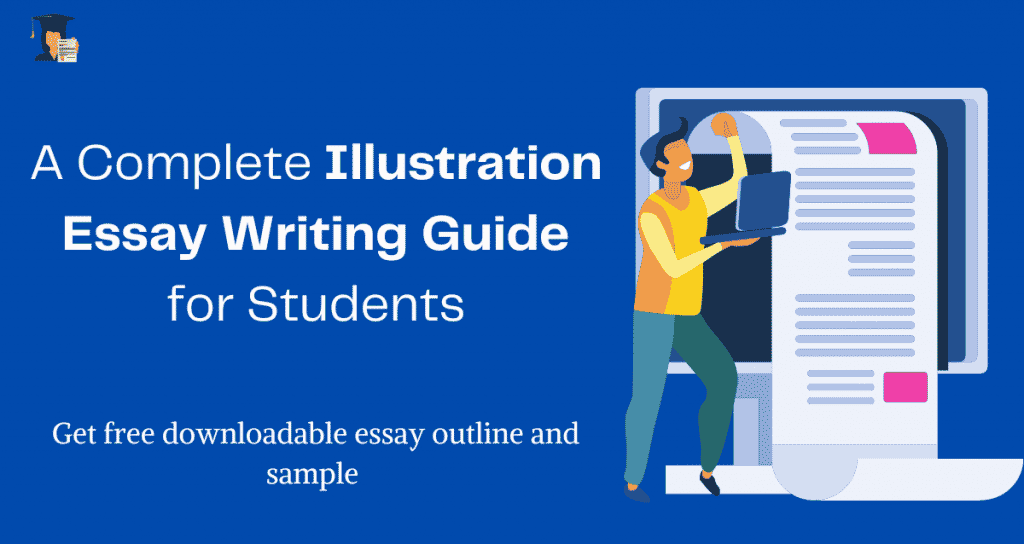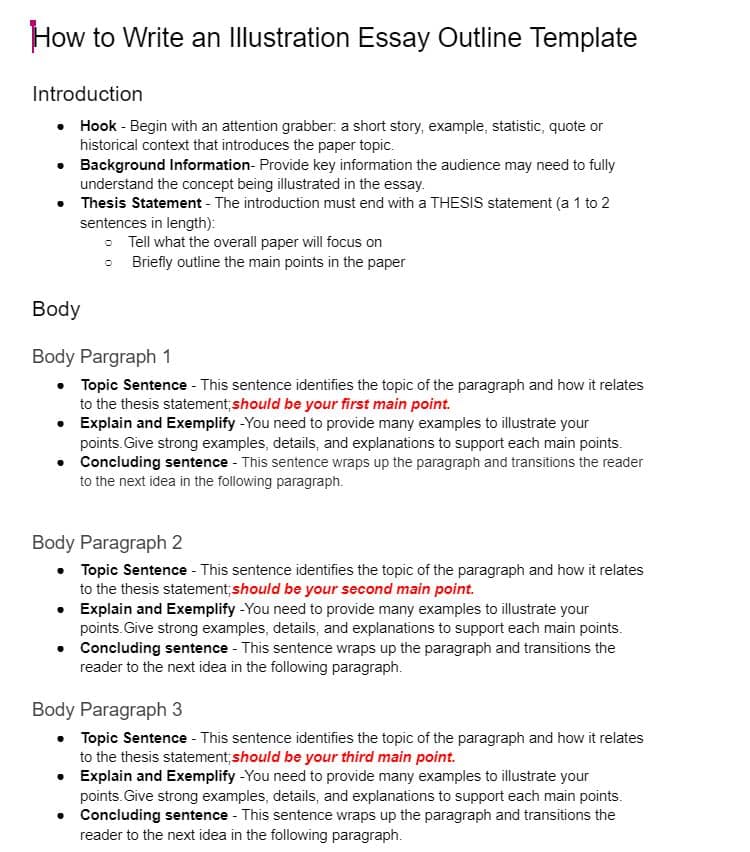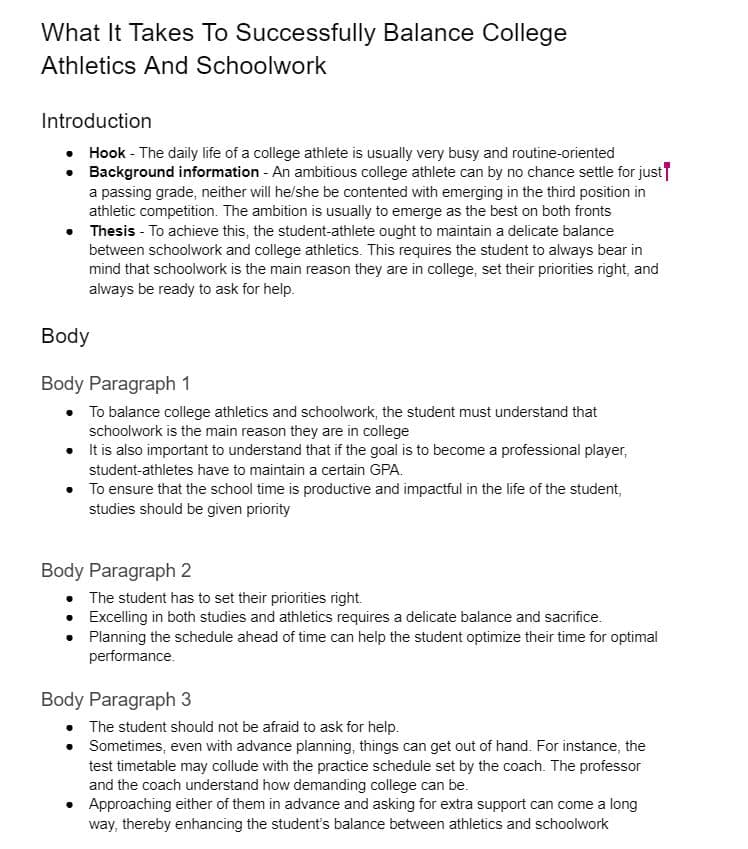When you’re assigned an illustration essay, it can be intimidating. But don’t worry – it’s actually a lot of fun! This guide will walk you through everything you need to know on how to write a great illustration essay. First, we will discuss what exactly an illustration essay is. Then, we’ll go over the steps for writing a successful one. Finally, we’ll provide some helpful tips and resources to make the process easier. Let’s get started!
What Is An Illustration Essay?
An illustration essay is a type of writing that uses examples to describe, explain, or support a point. Students can do this essay in several ways: using specific details, experiences, facts, statistics, and examples. As its name suggests, an illustration essay provides readers with illustrations or images that help explain an idea or support an argument.
When writing this essay, choosing your examples and using them to support your thesis is essential. In addition, you will need to ensure that your illustrations are clear and concise so that readers can easily understand how they relate to your main point.
A-List of Unique Examples of Illustration Essay Topics
Tips on how to choose a good illustration essay topic
Choosing a topic is one of the first things you do when you have been tasked to write an essay. Here are important things you need to consider when picking an essay topic.
- Pick a topic that you can adequately illustrate. In other words, it should be possible to provide a sufficient number of examples to support the main points of your essay.
- Settle on a topic that will interest the reader. An illustration essay is more than just a list of examples; it should also tell a story or make an argument. As such, choosing a topic that will engage the reader on some level is crucial.
- Pick a topic that you are familiar with. This will make it easier to provide clear and concise examples.
- Choose a topic that is timely and relevant to your audience.
Here are some topic ideas for consideration:
- The cost of college tuition and how it has changed over time.
- The competition between private and public colleges.
- The pressure to choose a “practical” major.
- The importance of extracurricular activities in the college admissions process.
- The difficulty of balancing work and school commitments.
- What is your favorite illustration from a children’s book? Write an illustration essay about it.
- Explicate how social media has changed the way we communicate with one another
- the significance of music in our lives
- The advantages and disadvantages of studying abroad.
- The impact of social media on the college experience.
- How has technology changed the way we learn? Write an illustration essay about it.
- “Rome was not built in a day.” Write an illustration essay exploring this proverb in depth.
- The impact of first impressions: write an illustration essay examining how first impressions are made and why they matter
- The difference between online and traditional college courses.
- The difficulty of getting into a top college.
Illustration Essay Structure and Outline Sample Template
A basic illustration essay consists of five paragraphs. The first paragraph is the introduction, which contains the thesis statement. The following three paragraphs are the body of the essay, each containing one or more examples supporting the thesis statement. Finally, the fifth paragraph is the conclusion, which restates the thesis and summarises the essay’s main points.
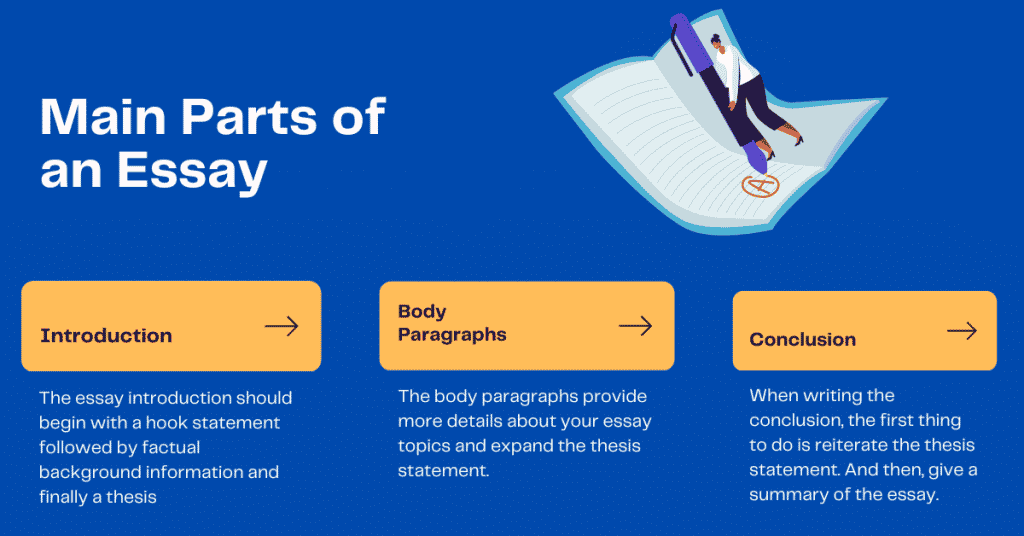
If you’re having trouble coming up with the structure for your illustration essay, or if you’re simply short on ideas, consider using this template. This template provides a structure for your essay and how to organise all the ideas you have.
illustration essay outline template and Free Sample
Step-by-Step Guide on How to Write an Illustration Essay
Here is the step-by-step guide that you can follow for writing an excellent illustration essay.
1. Planning
The key to writing a successful illustration essay is planning. Without a clear plan, you can easily get lost when writing your essay without a clear plan. Planning involves listing the tasks you will do when writing your essay and creating schedules to avoid missing your deadline.
2. Choosing a Topic
It’s no secret that choosing a good topic is the key to writing a successful essay. After all, how can you illustrate your point if you don’t have a good topic? Ensure the topic you pick is manageable, researchable and interesting.
3. Research and Material gathering
One of the most important aspects of writing an illustration essay is conducting research and gathering material. This can be a challenge, especially if you’re unsure how to start. Here are a few tips to help you research and gather material for your essay:
First, take some time to brainstorm ideas. What topics or ideas do you want to illustrate? Once you have a general idea, start doing some research. Look for articles, books, and other sources to help you learn more about your topic. As you read, take notes on key points and concepts you want to include in your essay.
Next, start collecting examples. These could be real-life examples, such as personal experiences or events you’ve witnessed. Or, they could be fictional examples, such as stories or hypothetical situations. If you’re having trouble finding examples, try brainstorming different ways to illustrate your main points. For instance, if you’re trying to illustrate the concept of love, you might brainstorm examples that show how love can be painful, beautiful, or both.
4. Creating an Outline
Creating an outline will make the writing process more manageable. Ensure your outline has the introduction, body paragraphs, and conclusion, and write briefly and add the ideas you would add in each section.
5. Write the Introduction and Thesis Statement
The introduction is the first paragraph of your essay. The length of your paragraph will depend on the complexity of your topic and how much information you have gathered.
The essay introduction should begin with a hook statement followed by factual background information.
The last sentence of the introductory paragraph is the thesis statement. Your thesis statement should reflect your point of view. It is a one-sentence statement that tells the main point of the essay.
Illustration Essay Introduction Example
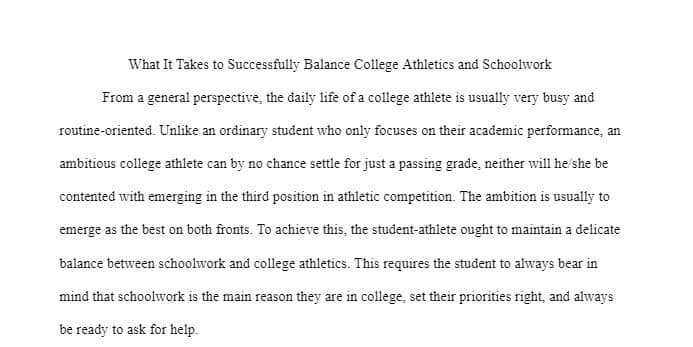
6. Write the Body Paragraphs
The body paragraphs provide more details about your essay topics and expand the thesis statement.
Each body paragraph should begin with a topic sentence followed by strong supporting evidence and an example.
The stronger the evidence, the more interesting and convincing your essay. Ensure the illustration you provide to support a point must relate to the subject and your audience. You can also mention evidence in terms of importance, from important to least important or from least important to the most important.
Illustration Essay Body Paragraphs Example
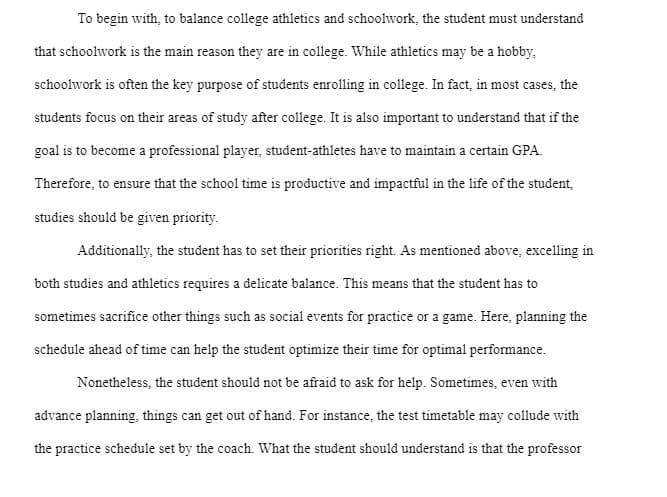
7. Write the Conclusion for your Essay
When writing the conclusion, the first thing to do is reiterate the thesis statement. And then, give a summary of the whole article and emphasise the importance of your argument. Ensure to leave the reader with something to think about.
Illustration Essay Conclusion Example
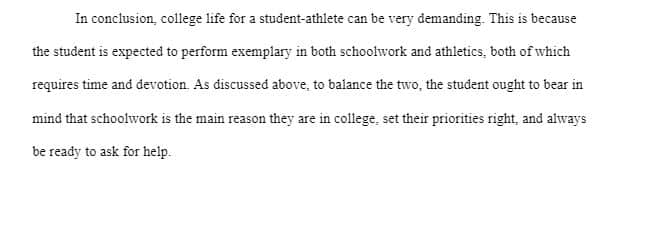
8. Reference and Format Your Essay
When writing an illustration essay, it is important to reference and format your paper correctly. Depending on the citation style that you are using, the format of your paper will vary. However, there are some general guidelines that you can follow.
First, ensure that all sources are cited correctly throughout your paper. Each time you use a quote or statistic from another source, you should include a citation.
Second, create a list of all the sources you used at the end of your illustration essay. This is typically called a bibliography, or works cited page.
Finally, make sure that your paper is formatted correctly. This includes choosing the right font and margins and using headings and subheadings to organise your information.
9. Proofread and Polish Your Essay
Proofreading and polishing your illustration essay is an important step in writing. By taking the time to error-check your work, you can be sure that your essay will be clear and concise. Here are some tips on how to proofread and polish your illustration essay:
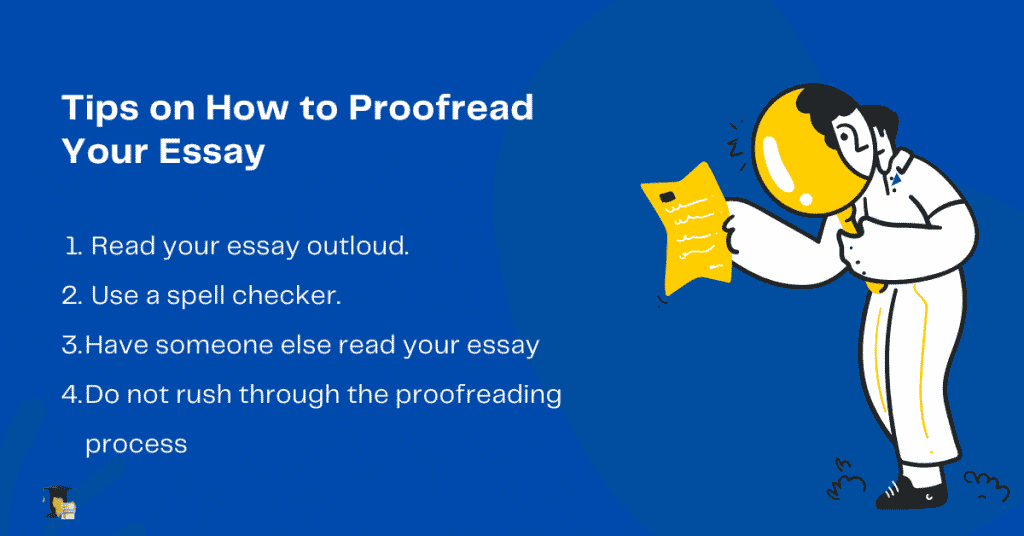
1. Read your essay aloud. This will help you catch errors that you might otherwise miss.
2. Use a spell checker. It will help you identify any typos or misspellings.
3. Have someone else read your essay. Another set of eyes can often spot errors that you have missed.
4. Take your time. Rushing through the proofreading process is more likely to result in mistakes.
Tips to Consider When Writing an Illustration Essay
Here are things to consider while writing an illustration essay :
Avoid undebatable illustration topics
If you choose an undebatable topic for your essay, you will not be able to persuade your reader to see your point of view. Instead, you will simply be reiterating what they already know. For instance, everyone knows that the sky is blue, so there is no need to write an illustration essay about it. Instead, focus on choosing a topic that will allow you to illustrate a new idea or perspective. This way, you will be able to engage your reader and expand their understanding of the topic at hand.
Use Reliable Sources
To choose appropriate examples and evidence for your essay, you must rely on credible sources. This means choosing sources that are trustworthy and authoritative.
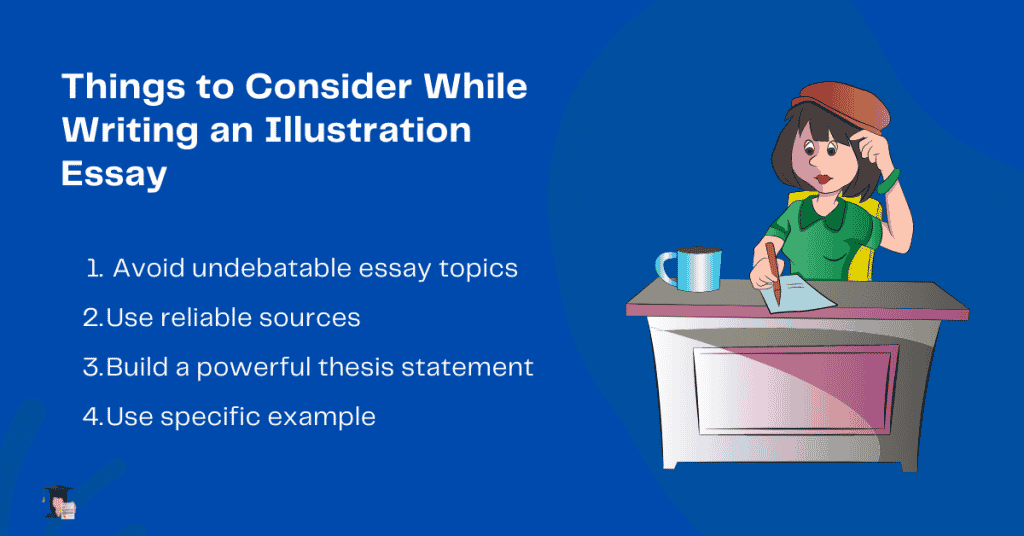
Build a powerful thesis statement.
An illustration essay is a type of argumentative writing, so your thesis must make a clear argument that you will support with examples. Building a solid thesis statement will make it easier for you to write a clear and effective essay.
Use Specific Examples
Using specific examples to illustrate your point is important when writing an illustration essay. This directs the reader’s attention to your central idea and helps to make your argument more convincing. In addition, using concrete, rather than general, examples makes your writing more exciting and inviting to read. Therefore, when choosing examples to include in your essay, be specific and resonate with your readers. Doing so will ensure that your essay is both informative and engaging.
Conclusion
By following the simple guide we’ve outlined for you and using our sample illustration essay, you can write an A-grade paper yourself. Illustration essays are a fun way to share your original ideas with the world, and with a bit of practice, you can make yours shine. We hope this guide has been helpful and wish you luck on your upcoming illustration essay assignment!
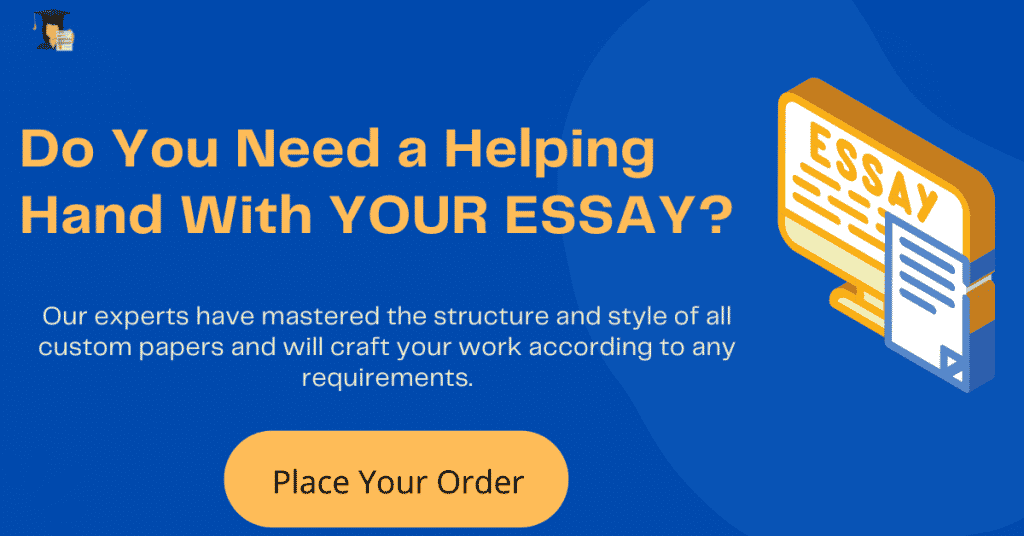
Illustration Essay Example
What It Takes to Successfully Balance College Athletics and Schoolwork
Student’s Name
Institutional Affiliation
Course
Instructor
From a general perspective, the daily life of a college athlete is usually very busy and routine-oriented. Unlike an ordinary student who only focuses on their academic performance, an ambitious college athlete can by no chance settle for just a passing grade, neither will he/she be contented with emerging in the third position in athletic competition. The ambition is usually to emerge as the best on both fronts. To achieve this, the student-athlete ought to maintain a delicate balance between schoolwork and college athletics. This requires the student to always bear in mind that schoolwork is the main reason they are in college, set their priorities right, and always be ready to ask for help.
To begin with, to balance college athletics and schoolwork, student must understand that schoolwork is the main reason they are in college. While athletics may be a hobby, schoolwork is often the key purpose of students enrolling in college. In fact, in most cases, the students focus on their areas of study after college. It is also important to understand that if the goal is to become a professional player, student-athletes have to maintain a certain GPA. Therefore, to ensure that the school time is productive and impactful in the life of the student, studies should be given priority.
Additionally, the student has to set their priorities right. As mentioned above, excelling in both studies and athletics requires a delicate balance. This means that the student has to sometimes sacrifice other things such as social events for practice or a game. Here, planning the schedule ahead of time can help the student optimize their time for optimal performance.
Nonetheless, the student should not be afraid to ask for help. Sometimes, even with advance planning, things can get out of hand. For instance, the test timetable may collude with the practice schedule set by the coach. What the student should understand is that the professor and the coach understand how demanding college can be. Therefore, approaching either of them in advance and asking for extra support can come a long way, thereby enhancing the student’s balance between athletics and schoolwork.
In conclusion, college life for a student-athlete can be very demanding. This is because the student is expected to perform exemplary in both schoolwork and athletics, both of which requires time and devotion. As discussed above, to balance the two, the student ought to bear in mind that schoolwork is the main reason they are in college, set their priorities right, and always be ready to ask for help.
FAQs
How many paragraphs should an illustration essay have?
The number of paragraphs in an illustration essay varies depending on the length of the essay and the number of examples used to illustrate the main point. A shorter essay may only have one or two body paragraphs, while a longer essay may have three or more.
How different is an illustration essay from other essays?
An illustration essay is a type of argumentative essay that uses examples to support its thesis. However, unlike other essays, an illustration essay does not rely solely on logic and reasoning to make its case. Instead, it uses concrete, specific examples to illustrate the point it is trying to make.


